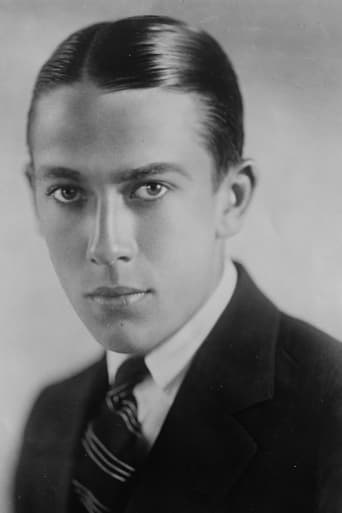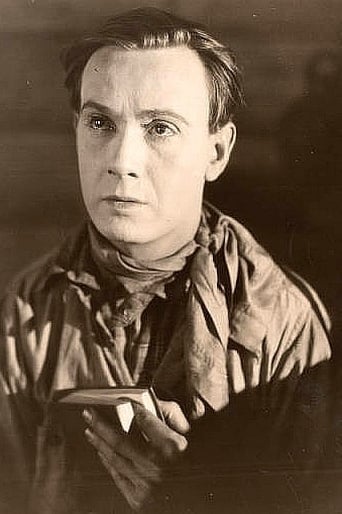Twilightfa
Watch something else. There are very few redeeming qualities to this film.
AnhartLinkin
This story has more twists and turns than a second-rate soap opera.
Aubrey Hackett
While it is a pity that the story wasn't told with more visual finesse, this is trivial compared to our real-world problems. It takes a good movie to put that into perspective.
Ezmae Chang
This is a small, humorous movie in some ways, but it has a huge heart. What a nice experience.
Richard Chatten
Julia Crawford Ivers' adaptation of Mark Twain's classic 1876 novel is faithful to the highlights of the first half of the book, and since the sequel 'Huck and Tom' hit screens just three months later this film was presumably always intended as Part One of a lengthy two part film. We therefore get the whitewashing episode, the introduction of Becky Thatcher into Tom's life, the business with the bible study tickets and the exaggerated reports of Tom's death, concluding with his appearance at his own funeral.But Muff Potter, Injun Joe and the scenes in the caves would have to wait for the appearance of 'Huck and Tom' (1918), in which the amiable tone that has so far prevailed presumably darkens considerably. Robert Gordon doesn't actually have that much screen time as Huck Finn in this first film and presumably comes into his own in the sequel (especially with his name coming first in the title).
wes-connors
Jack Pickford (as Tom Sawyer) is not the model boy of his village; in fact, he beats up the model boy (Carl Goetz). Mr. Pickford is impressed with the "juvenile pariah" of the village, Robert Gordon (as Huckleberry Finn) - although Pickford is "under strict orders not to play" with Mr. Gordon, the boys are attracted to each other; and, Gordon brings Pickford a large watermelon to eat. Sore from tussling with the model boy, and sporting a "sore toe", Pickford is, nevertheless, ordered to whitewash the Sawyer fence. Along comes Antrim Short (as Joe Harper), eating an apple, and pretending to be a Mississippi river steamboat; Pickford tricks Short into giving up his apple, and whitewashing the fence. Pickford is munching on a different apple when he notices "new girl in town" Clara Horton (as Becky Thatcher)… Director William Desmond Taylor and writer Julia Crawford Ivers' adaptation is first rate; the production team would finish the lads' adventures with "Huck and Tom" (1918) and "Huckleberry Finn" (1920). This beginning is a surprisingly good, and relatively faithful, version of the Mark Twain classic. The focus is on Pickford's "Tom", and his friendships with Gordon's "Huck" and Short's "Joe". The three boys take off together, going down the Mississippi river; while, back home, the villagers think they are dead. Jack Pickford proves himself to be as good a performer as his more famous sister (Mary Pickford); he is more than capable in the "Tom Sawyer" role - skipping, pouting, flirting, jumping fences, and getting sick on fresh catfish; he brings the character to life. He and the other "children" appear too old for their roles in many instances; so, for example, Pickford stealing a kiss from Horton loses its innocence, and looks more like an attack. Yet, most of the time, the performers make themselves believable. Though most faithful, this is definitely an interpretation of Twain's characters. There is some symbolism in this film that I don't recall from the novel (which I will have to re-read); director Taylor uses food (like the Apple) from the novel; but, possibly, in a different way. Pickford and Gordon create a particularly interesting dynamic: drawing lines with their feet, rubbing shoulders, and drawing in their knees. I found the recurring "sore toe" of Tom's fascinating; and, note that when the boys "escape", he is relieved from this malady. This is another nuance to track in a re-reading of "Tom Sawyer". ******** Tom Sawyer (12/2/17) William Desmond Taylor ~ Jack Pickford, Robert Gordon, Antrim Short
Into_The_West
The literary critic Leslie Fiedler made a name for himself writing the essay, "Come Back to the Raft Ag'in, Huck Honey," in which he asserted Jim and Huck were in some way sexually or romantically attached in the book, "Huckleberry Finn." While the methodology by which he arrived at this conclusion was questionable, his inspiration, likely unconscious, was the interpretations some film directors have given to Twain's work, such as William Desmond Taylor's in this film.It's not been uncommon to cast actors a lot older than Tom and Huck to play these characters. Finding actors between the ages of 12 and 14 to play these parts competently, at least in the past, wasn't easy. Romeo and Juliet have rarely been played in film by teenagers for this reason.So we have Jack Pickford at the age of 21 playing Tom, and Robert Gordon at 22 playing Huck! Both are too tall, physically mature and attractive to be viewed as early adolescent boys. Gordon, dressed in a ragged shirt missing one sleeve, displays a muscular arm no 14 year old boy could have.So the film becomes one about boys in their late teens, making scenes that are supposed to be evocations of innocence into something quite different. The scene where Pickford, Gordon, and 17 year-old Antrim Short as Joe Harper run naked (they're actually wearing undershorts, but the duration of the shots are so brief the impression is of nudity) through a glen, dive into the Mississippi, then wrestle each other in the water is a prime example. Indeed, when this film was shown on Turner Classic Movies, it was given a "TV PG" rating, undoubtedly for this scene.It isn't, however, just about the actors being "too old" to play the characters. A scene early on in the film has Pickford come over to Gordon who is sitting by a water pump. Gordon then scratches the ground with his big toe in a way that seems to mirror Pickford's awkward exchanges with Clara Horton as Becky Thatcher later in the film. Gordon then points out he has brought a watermelon for he and Pickford to share. Pickford is elated, Gordon tears apart the watermelon, and they both eat from it, exchanging beaming glances at each other as they do. Whereas people might argue as to whether Huck is flirting with Tom or not, one has to acknowledge Gordon's Huck does not fit the film stereotype of the Huck we've come to expect--he is not a cute, clean and orderly, freckled, red-haired kid. This Huck is a raggedy, dirty, "helter-skelter" (to quote a 1917 film review) "juvenile pariah" (to quote the subtitle introducing him in the film). Indeed, it doesn't seem far off to say this Huck seems like a very young, attractive, good-hearted, nice-natured version of the backwoodsmen in "Deliverance," a product of an isolated, impoverished, neglected and highly abusive childhood (which in this case is very much from Twain). This particular Huck _could_ flirt with Tom, and it seems more acceptable because both boys seem more like adults.Undoubtedly, these things have to have had an impact on people like Leslie Fiedler indirectly through their influence on subsequent Twain films.This is not to say these things in any way distract from the story. Taylor prevents this by keeping them as subcontext (in 1917 it's doubtful he could have done otherwise) and produces a film which could be argued as the one truest to the spirit of Twain's original, with Pickford, despite his age, as the most rambunctious Tom ever on film, and Gordon as a more realistic Huck than we'd see in later films.Finally, for an 87 year old film, it holds up quite well, and its unusual subcontext gives it a daringness that makes it feel more like a film of today than of the time seven years after Mark Twain's death.Addendum 5/8/06:One thing I noticed about Gordon's Huck that struck me strangely is that with his wig of red wild curls and goofy expression, he seems curiously like Harpo Marx. Since Harpo developed the character around the time of this film, I wondered if it hadn't influenced the creation of the film Harpo.The fact is, it did not. At the time of the First World War, there were many people who imitated an Irish stage comedian named Patsy Brannigan, who also had a wild head of red curls and just as wild a demeanor.One critic of our time looked at the film and said Gordon's Huck was "a burlesque," not a legitimate attempt to portray Twain's character. The discovery of the Patsy Brannigan connection reveals that this wasn't a burlesque of Huck Finn, at all, but rather the playing of him as a totally different character, a (to then audiences) recognizable comic stereotype. Perhaps this was because of Gordon's age--Huck had to be modeled on an older character. It is bizarre, however, to look at the Cocoanuts, where Harpo's red wig is as dark as Gordon's is, and compare the two wild characters to each other. It's strange (or maybe not so strange) to note 80 or 90 years after a film, the source of a character can become completely unknown, and a kind of fast forward anthropology has to be done.
Ron Oliver
Mark Twain's immortal TOM SAWYER flirts with Becky Thatcher, goes rafting with Huckleberry Finn on the Mississippi River & generally makes life a sore tribulation for the law-abiding citizens of St. Petersburg, Missouri.Produced only seven years after the death of Mark Twain, this rousing, action packed silent film remains faithful to the original classic novel. The fine production values lavished upon it give it the feel of an old photo album. Many of the favorite episodes from the first half of the book are included and filmed with much charm.Jack Pickford gives a hardy, robust portrayal of Tom, the eternal companion of millions of American boys. Although a bit tall & old (he was 21) to be an authentic portrait of the real Tom, he comes close enough. Tattered, begrimed Robert Gordon as Huckleberry Finn also scores in his small role.The film concludes with the boys interrupting their own funeral, after being assumed drowned while river rafting. Director William Desmond Taylor decided to film the rest of the book and release it as a sequel, which he did the following year as HUCK AND TOM (1918). Four years later, in 1922, Taylor's still unsolved murder would give Hollywood one of its most sensational scandals.Almost forgotten today, Jack Pickford, Mary's younger brother, was a movie star in his own right, appearing in 106 films between 1909 & 1928. Lacking his sister's intense dedication & drive, he gave his life over to riotous living - to the detriment of his career. Personal tragedy & dissipation would haunt him until his death in 1933 at the age of 36.





